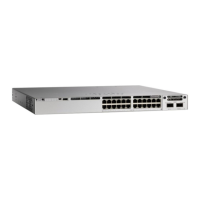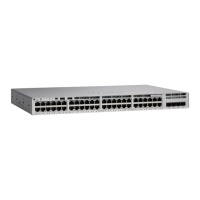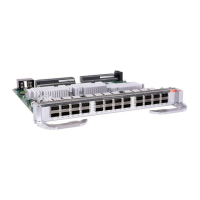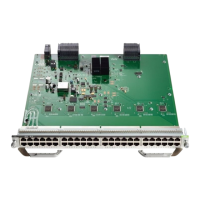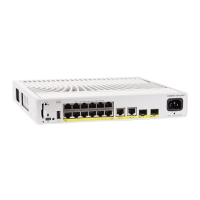Configuring a VPN Routing Session
Routing within the VPN can be configured with any supported routing protocol (RIP, OSPF, EIGRP, or BGP)
or with static routing. The configuration shown here is for OSPF, but the process is the same for other protocols.
To configure an EIGRP routing process to run within a VRF instance, you must configure an
autonomous-system number by entering the autonomous-system autonomous-system-number
address-family configuration mode command.
Note
Procedure
PurposeCommand or Action
Enters global configuration mode.configure terminal
Example:
Device# configure terminal
Step 1
Enables OSPF routing, specifies a VPN
forwarding table, and enter router
configuration mode.
router ospf process-id vrf vrf-name
Example:
Device(config)# router ospf 1 vrf vpn1
Step 2
(Optional) Logs changes in the adjacency state.
This is the default state.
log-adjacency-changes
Example:
Device(config-router)#
log-adjacency-changes
Step 3
Sets the switch to redistribute information from
the BGP network to the OSPF network.
redistribute bgp autonomous-system-number
subnets
Example:
Device(config-router)# redistribute bgp
10 subnets
Step 4
Defines a network address and mask on which
OSPF runs and the area ID for that network
address.
network network-number area area-id
Example:
Device(config-router)# network 1 area 2
Step 5
Returns to privileged EXEC mode.end
Example:
Device(config-router)# end
Step 6
Routing Configuration Guide, Cisco IOS XE Everest 16.6.x (Catalyst 9500 Switches)
173
Configuring IP Unicast Routing
Configuring a VPN Routing Session

